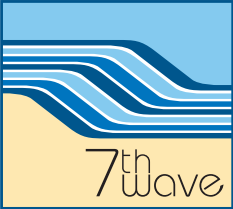Following the sad loss of life during the attempted rescue of the HMS Racehorse at Langness during the winter of 1822 Sir William Hillary gave shape to the idea of a more formal rescue service for those in peril on the sea. In February 1823 his idea had become a document of historic importance and the fore runner of the notion of a National Lifeboat Service. The document was ‘An Appeal to the British Nation on the Humanity and Policy of forming a National Institution for the preservation of Lives and Property from Shipwreck’ and it was sent to the Admiralty.
The months pasted by and nothing was heard. A minute of the Admiralty Digest of that year revealed the official attitude. Someone had written on the original letter “I Have wrung over this and I think what it advocates is worthy at least of consideration and should not be at once negatived….” and also “I should not deem it at all necessary for the Admiralty to take any immediate lead with respect to it.”
Sir William made a second Appeal during November 1823, his perseverance paid off and on 12 February 1824, at the City of London Tavern a preliminary meeting was held under the chair of the liberal M P for Southwark, London, Thomas Wilson into the formation of a national lifeboat institute.
Wilson had convinced Sir William that such an institution stood a greater chance of being formed by a direct appeal for funding to the general public, rather than through the Admiralty. Later, perhaps the Government would be approached when it had been shown that such an institution was invaluable.
At a third meeting on 4th March 1824 at the Tavern in Bishopgate Street, the founders confirmed their patronage’s and tabled resolutions dealing with the formation and future operation of the institution under the chairmanship of the then Archbishop of Canterbury. The association was called “The National Institution for the Preservation of Life from Shipwreck”; King George IV was the first patron, the then Prime Minister its first president and the Dukes of Sussex, York, Clarence, Cambridge and Gloucester, vice-presidents. Among those who attended the meeting were the Archbishop of York , the bishops of London, Durham, Bath and Wells, William Wilberforce, the campaigner against the slave trade and several parliamentarians.
So, funded by public donations The National Institution for the Preservation of Life from Shipwreck began. Sir William being resident of the Isle of Man was not elected as chair given the distance he lived from London, but his idea had come to fruition, the National Institution for the Preservation of Life from Shipwreck would not become the RNLI until the 1850s and continues today, still funded by public donations.
